
In traditional industrial enterprises, a large number of legacy information systems and industrial equipment remain, where the methods of information collection, communication patterns, data formats, and operating systems are often not unified. The underlying information technologies they employ may vary significantly. In Industry 4.0, the most critical task is to introduce Cyber-Physical Systems (CPS) to connect various “heterogeneous” system devices, achieving mutual information compatibility. In the process of digitization, the construction of the Industrial Internet of Things (IIoT) needs to minimize modifications to existing systems, ensuring backward compatibility (with legacy systems).
Therefore, Industry 4.0 primarily achieves the “internet connectivity” of old devices and systems through “functional expansion” (adding CPS), focusing on three types of integration (horizontal integration, vertical integration, and end-to-end integration), rather than reconstructing the underlying information architecture of industrial systems (restructuring protocol standards and opening interfaces).
From a goal perspective, the Industrial Internet and Industry 4.0 are highly consistent, aiming to aggregate capabilities through the networking of industrial systems, flexibly utilizing them to serve personalized and creative demands, and generating new business models and ecosystems.
In the Industrial Internet white paper, the Industrial Internet is described as: dedicated to networking industrial control systems to form large end-to-end systems. Industrial Internet systems can connect with people and fully integrate internal systems, processes, and analytical tools. Such end-to-end systems are referred to as “Industrial Internet Systems (IISs)”.
The architecture of the Industrial Internet begins with commercial interests (the initiators of the alliance are all large enterprises), conducting ecosystem research based on various applications, and simplifying the system architecture for better understanding by organizations and individuals across different fields.
Unlike Industry 4.0, which emphasizes integration, the Industrial Internet leans more towards studying the “roles” of stakeholders. The “roles” in production division refer not only to enterprises and organizations along the industrial chain but also include various professionals within enterprises, such as business decision-makers, technical engineers, and product managers. While Industry 4.0 also contains substantial content regarding the research and elaboration of “workers (people)”, it mainly considers it from a sociological and human resource management perspective.

From the perspective of “roles”, the Industrial Internet proposes a four-layer “Viewpoint” structure (also referred to as “components” in some articles).
1. Business Viewpoint
In the construction of the Industrial Internet, the business viewpoint focuses on identifying the commercial vision, values, and goals of stakeholders. Relevant personnel (including industry users) need to consider how to achieve business objectives through the basic functions provided by the Industrial Internet. (Industry users: business decision-makers, product managers, system engineers, etc.)
2. Usage Viewpoint
The usage viewpoint is positioned on reliable and complex system applications (functions). Through a series of self-service operations by professional users or logical users (usage process), they can access the basic functions or services of the system and assemble them into mature commercial applications. (Professional users: system engineers, product managers, etc.; logical users: smart terminals)
3. Functional Viewpoint
The functional viewpoint focuses on the basic functional modules (components of the system) within the Industrial Internet system to support the operation of upper-layer application components. The functional viewpoint mainly studies the relationships between modules, their combination structures, information interaction interfaces, usage processes and steps, as well as the relationships between functional modules and the external environment of the system. (System and component architects, developers, integrators)
4. Implementation Viewpoint
The implementation viewpoint primarily focuses on the information technology elements within the functional viewpoint, including specific industrial control systems, communication schemes, and software programs. The implementation component (viewpoint) focuses on the most basic and core technical architecture of the Industrial Internet, where functions (viewpoint) are built on the technical architecture of the implementation viewpoint, enabling multiple applications (viewpoints) to work together and achieve complete business delivery. (System and component architects, developers, integrators, and system operators.)
The Industrial Internet believes that industrial control systems (ICS) in the industrial field have already achieved cross-industry automation. They perceive the physical world to obtain information “incentives” and issue command signals to actuators through “solidified” and explicit logical operations, thereby changing the state of the physical world and environment through mechanical devices on the equipment. This “control” process is meticulously designed by engineers, ensuring that all behaviors of automated devices are explicit and fixed. However, if the production environment changes and the products need upgrading, engineers must redesign and adjust the system, which may require initiating a “lean” project for a production line. (Lean: a term specific to the manufacturing industry, simply understood as improving production systems and enhancing production line efficiency).
To adapt to changes in production environments and business demands, signal processing components in control systems must first communicate with external information systems, and secondly, establish a common “language” (communication protocols, data standards), and be able to accept coordination and commands from upper-layer applications to achieve flexible “flexible production” and collaborate with other business systems for “smart manufacturing”.
Among the four viewpoints, the “implementation viewpoint” primarily constructs the channel for information flow (from the perspective of the communication industry, this refers to topology, interfaces, standards, and message flows). Independent devices and systems in the “implementation viewpoint” will output sensing signals or accept command signals according to interface specifications, forming a digital mapping in the “functional viewpoint”, thereby obtaining an “identity” in the virtual world that can be queried, accessed, invoked, and shut down by other information systems.
The systems and capabilities within the four viewpoints are interwoven, differing only in the perspective from which they are viewed. The business viewpoint and usage viewpoint consider production activities more from a commercial perspective, focusing on funding, customer relationships, supply chains, human resources, enterprise assets, product life cycles, etc., viewing the Industrial Internet from top (demand) to bottom (implementation). The functional and implementation components view production activities from the perspective of information technology and industry technology, focusing on how to allocate computing resources, how to transmit information, how to operate devices, maintain and operate systems, and the robustness and security of technical architecture, providing a more layered and in-depth understanding of the Industrial Internet system, focusing on its “organic nature”.

In the four components of the Industrial Internet, both the functional viewpoint and the implementation viewpoint deconstruct the Industrial Internet from a technical perspective. The functional viewpoint focuses on the overall industrial system, representing the top-level technical architecture, defining and showcasing the interrelationships of core industrial capabilities; the implementation viewpoint focuses on the structure of information systems, serving as the digital foundation supporting the functional viewpoint, categorizing the information/network capabilities of the Industrial Internet.
In simple terms, the implementation viewpoint describes a person’s (industrial) “nervous system”, while the functional viewpoint presents a person’s (industrial) “organ organization”. The Industrial Internet, through these two perspectives, emphasizes clarifying the relationship between information technology and industrial technology. Currently, the architectural approach of Industry 4.0 tends to improve and overlay information technology. In contrast, the Industrial Internet focuses more on the reconstruction of future industrial systems, enabling a deep and organic integration of information and industry.
1. Functional Viewpoint
The Industrial Internet Alliance hopes to establish a clear, technical functional structure that is compatible with the traditional industrial technology structure of industrial automation and is applicable to most industrial information systems (such as ERP, etc.), while also possessing good scalability and robust system characteristics, achieving comprehensive digital production levels, and being understandable, designable, developable, and operable by relevant enterprises and personnel. Therefore, the Industrial Internet integrates technologies from the industrial and information fields, defining and categorizing corresponding functional modules, proposing the concept of the “functional viewpoint”, which is the top-level functional architecture of the Industrial Internet: the functional domain model.
The functional domain model consists of five basic functional domains. An enterprise’s information system can encompass all functional domains, some of them, or even just a single functional domain, with each functional domain being a relatively independent and complete system.Of course, actual business systems may modify or omit certain technical details within the functional domains based on application characteristics, but this will not affect the overall structure of the Industrial Internet.
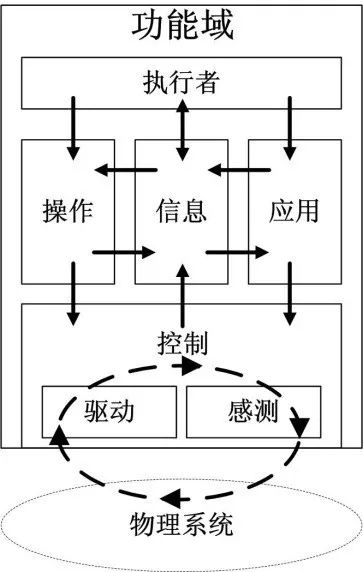
(1) Control Domain
The control domain is deployed at the edge of the Internet of Things, close to physical objects and environments, positioned at the edge of the IoT structure. The control domain includes:
Sensing, which refers to the perception of devices and environments by sensors;
Actuation, which refers to transmitting command signals to implement specified actions by mechanical components or circuit switches on devices. Additionally, injecting data into storage devices such as electronic tags is also a type of actuation.
Communication, which refers to the transmission of information within the edge network.
Entity Abstraction can be understood as the “digitalization” of objects, where the entity information of objects (states or attributes) is represented by unified, standardized, and meaningful data (i.e., digital information), allowing upper-layer systems to interpret sensing information and modify device states (actuation). Entity abstraction serves as a bridge between physical systems and information systems, completing the mapping between the virtual and the real. In the field of IoT, the narrow understanding of “digitalization” is “entity abstraction”.
Modeling, which is a systematic description of the physical world (including the analysis and prediction capabilities of individual entities). The objects of modeling can be production equipment (for example, predicting latent faults by collecting a large amount of equipment status information) or external environments (for example, a machine ping-pong player judging the landing point of a ball based on its trajectory in a video). The data source for modeling comes from the lower-level “entity abstraction”. Complex modeling requires the integration of advanced industry technical knowledge and high-level computation (such as artificial intelligence).
Executor interprets control objectives and implements a series of operations according to its control logic (transmitting commands to actuation and sensing). Executors possess autonomy, decision-making power, and intelligence, allowing them to dynamically and flexibly complete tasks. Of course, for particularly important or simple control objectives, executors may execute directly without logical judgment.
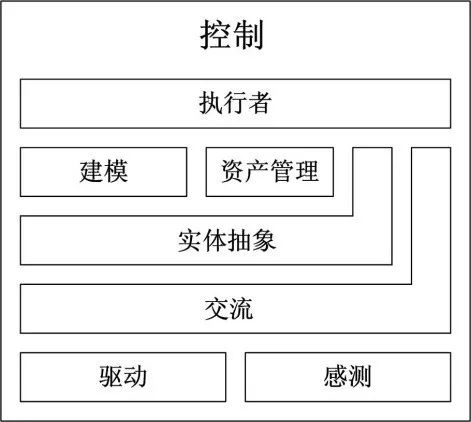
The entire control domain achieves the unity of (control) objectives and (physical) behaviors.
(2) Operation Domain
The operation domain is the centralized operation of the control domain system, which can be distanced from the control domain to achieve remote supervision. The main responsibilities of the operation domain include:
-
Allocating and managing resources for the realization of functions (components).
-
To ensure the robustness of functions, the operation domain must also possess monitoring and diagnostic analysis capabilities: evaluating system health by analyzing key performance indicators and promptly reporting or alerting issues such as system faults or performance degradation.
-
In addition to a “reactive” operational approach (handling issues after alarms occur), the operation domain must also support prediction and optimization: predicting faults and system bottlenecks, addressing issues before they occur (predictive maintenance); managing resource utilization and the status of lower-level system devices, optimizing production by adjusting resource allocation (for example, dynamically shutting down some idle machines to save factory electricity consumption).
In terms of predictive analysis, the operation domain requires assistance from the information domain to compensate for any potential deficiencies in computational capabilities.
(3) Information Domain
Collecting information from different domains and converting, modeling, and storing this vast amount of heterogeneous information to ultimately achieve advanced analytical functions (analyzing system bottlenecks or predicting industry chain trends).
The data processing capabilities of the information domain include:
-
Collecting (aggregating) massive data from sensors and operational statuses
-
Data quality management (data filtering, deduplication, garbage data removal)
-
(Heterogeneous) data format conversion
-
Semiotic processing (injecting annotation information into raw data, associating with other datasets, such as location information, temporal information, etc.)
-
Data storage and persistence (data persistence, conversion between memory data models and storage models)
-
Data distribution processing (including streaming analytic processing)
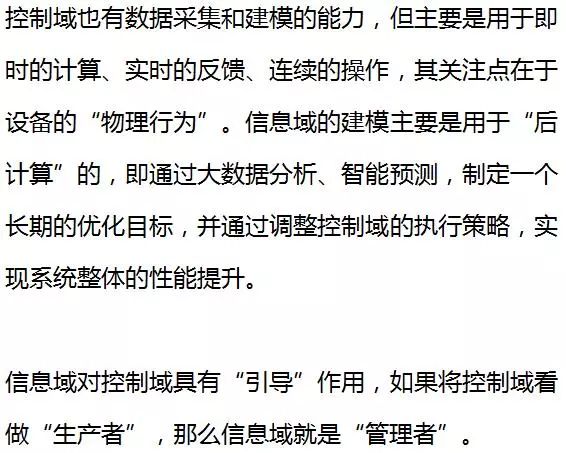
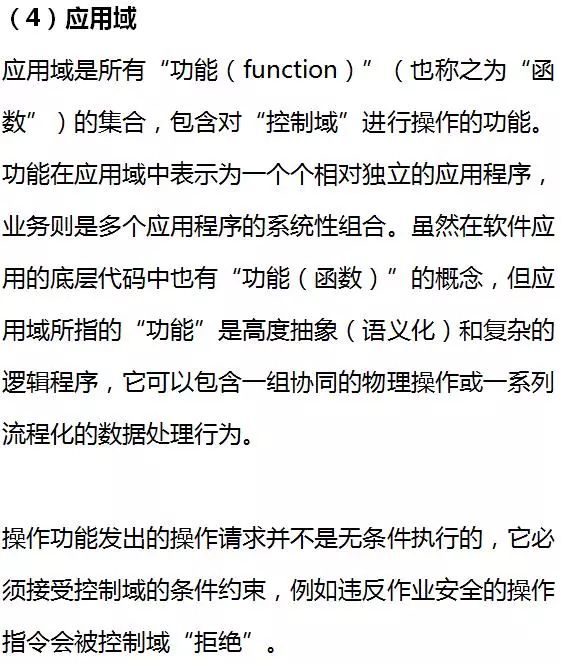
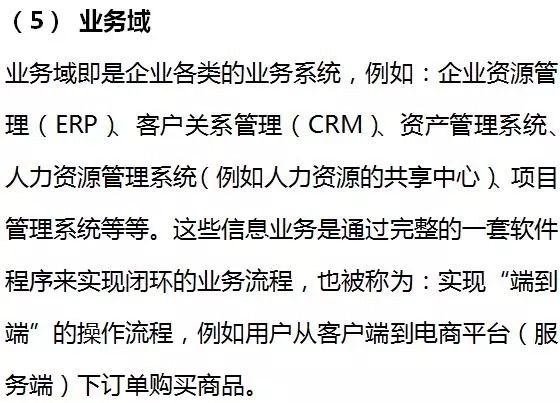
2. Implementation Viewpoint
The functional viewpoint, as the top-level technical architecture, essentially views the technical architecture of the Industrial Internet from an overall industrial perspective, while the implementation viewpoint looks at the Industrial Internet from the perspective of “specific implementation”. It is actually a foundational part of the functional viewpoint, but in the author’s view, the essence of “implementation” is the mutual conversion of physical information and virtual information. Therefore, the functional topology presented by the implementation viewpoint appears more like a “networking and computing method serving information”, emphasizing protocols, interfaces, and the informational mapping of system actions and device states. For professionals in the communication field, it is easy to understand the architecture under the implementation viewpoint and correlate it with the IoT network architecture.
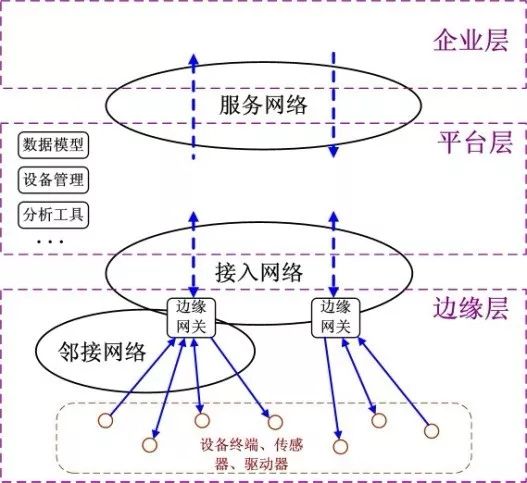
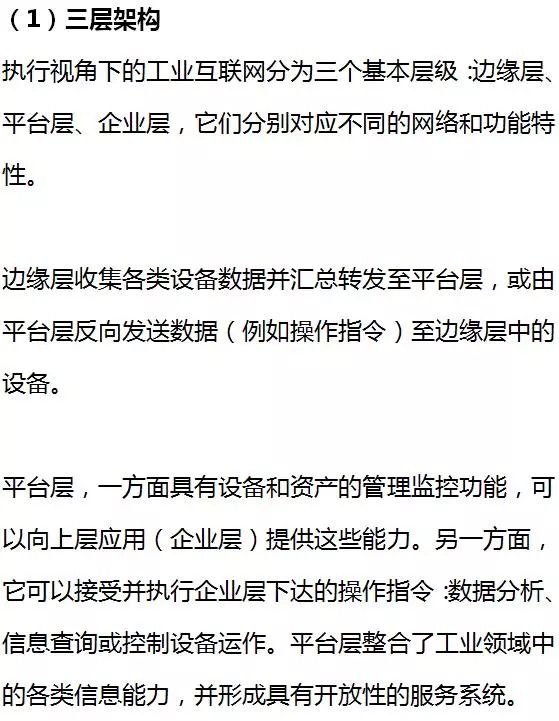
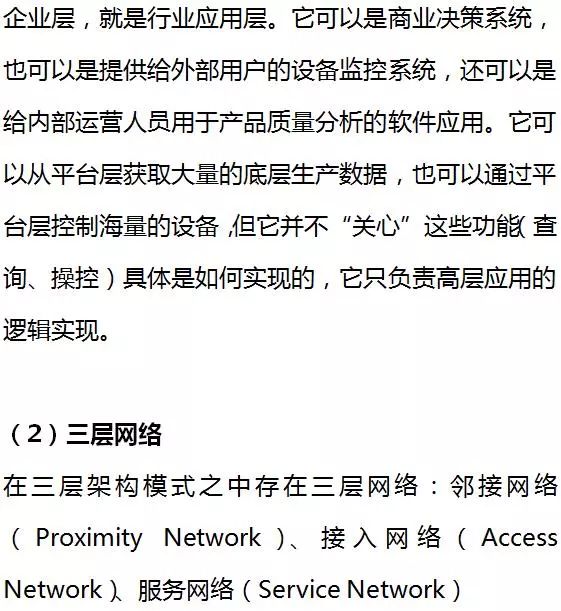
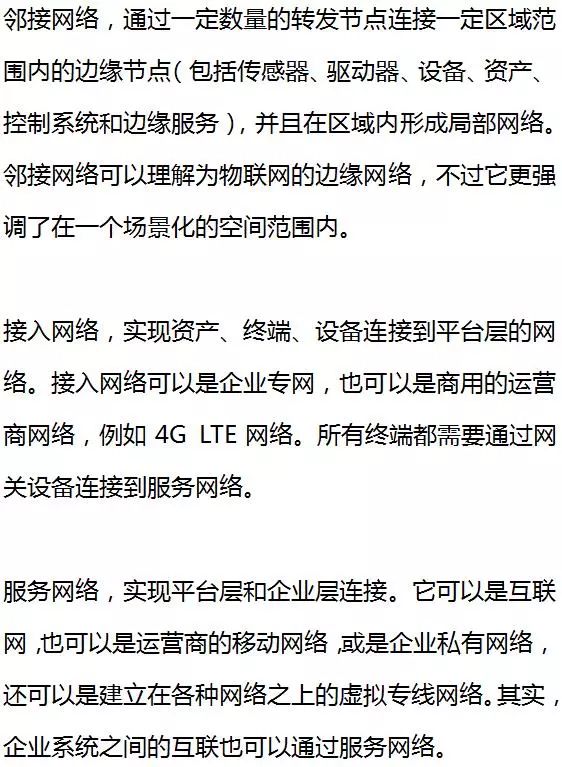
Statement
Source: China Industrial News, copyright belongs to the original author, and thanks to the original author, please indicate when reprinting.

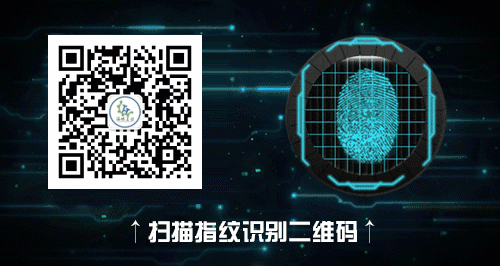

Organizer
Phone: 0412-3225613WeChat: Haicheng Micro IndustryAddress: No. 71, Government Comprehensive Building, Dongliu Village, Haicheng CityOfficial: Haicheng Economic and Information Technology BureauEmail: [email protected]
